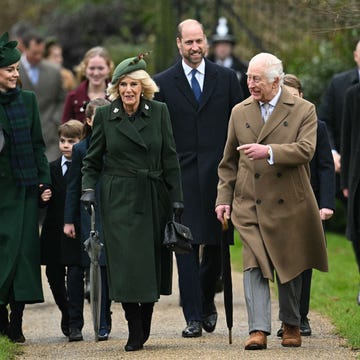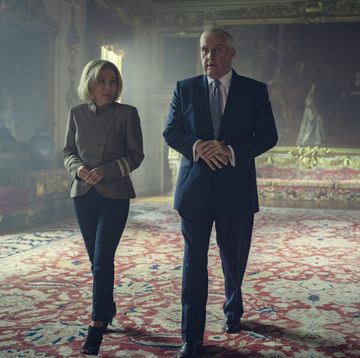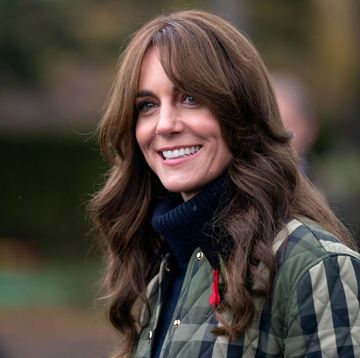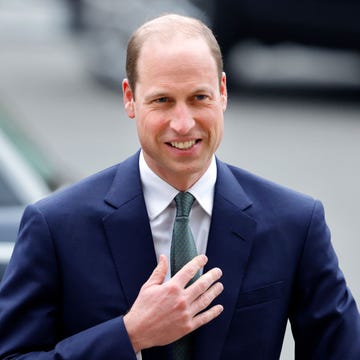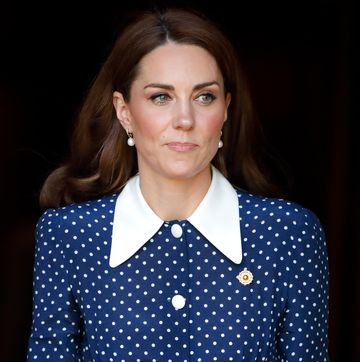Powerful female leaders have long been a trademark of England. After all, Queen Elizabeth II wasn’t just the longest-ruling monarch, but she was also the only female member of the British royal family to have served on active duty with the British Armed Forces, even having served during World War II. And there was also Margaret Thatcher, who, despite her controversial policies dubbing her “Iron Lady,” made her mark as the first female prime minister and the longest-serving prime minister in 150 years.
With Thatcher’s 11-year term from 1979 to 1990 falling within the queen’s rule, the women also served the European nation simultaneously for more than a decade—and their roles required them to work together.
“The queen also has a special relationship with the Prime Minister, retaining the right to appoint and also meeting with him or her on a regular basis,” the official royal site describes.
Whatever happened behind the scenes during those meetings, tales of a difficult dynamic between the women leaders often topped the headlines of the British media, perhaps egged on by their similarities.
Thatcher and Elizabeth were born six months apart
While Thatcher was born into a modest family who lived in an apartment above the grocery store they ran and Queen Elizabeth II was, of course, born with a jeweled silver spoon in her mouth, the two Brits were remarkably close in age.
Born Margaret Hilda Roberts in Grantham, England, on October 13, 1925, Thatcher was just six months older than Princess Elizabeth Alexandra Mary, who was born in London on April 21, 1926.
This also made Thatcher the closest prime minister in age to the queen during her reign.
The two women met every week for 11 years
One of the queen’s major duties was to hold meetings called Audiences, which are a “key element of the queen’s day-to-day work, and enable her to give time and focus to key individuals,” the royal site explains. And throughout her reign, she held a weekly Audience with the serving prime minister to discuss governmental issues.
“The Audience is held in an Audience room in her apartments and is entirely private,” the site continues. “Though the queen remains politically neutral on all matters, she is able to ‘advise and warn’ her ministers—including her Prime Minister—when necessary.”
It’s during these unrecorded meetings that much of the tension between the two reportedly began to form. According to a 2014 documentary The Queen and Her Prime Ministers, Thatcher would arrive 15 minutes too early, and the queen would always make her wait.
Their interaction was “professional, formal, and famously stiff,” according to CNN, which also reported that the prime minister viewed the annual visits to the Balmoral royal home as “interrupting her work.” The outlet also called their relationship “tense.”
“The Audiences were rarely very productive because Mrs. Thatcher was nervous,” journalist Charles Moore wrote in his 2015 biography, Margaret Thatcher: The Authorized Biography: From Grantham to the Falklands.
Their personalities may have caused clashes
The root of their tension may have come from their opposing personality styles. The royal was said to have a “dry wit,” while Thatcher didn’t have much of a sense of humor—reportedly going as far as needing to have a Monty Python joke described to her.
Furthermore, conversations with Thatcher were said to often “go on and on”—as was her determination to stay in 10 Downing Street. Thatcher held a record three terms as prime minister until she resigned in 1990. In that respect, the two women were more alike than different. Queen Elizabeth II sat the throne for 70 years, until her death at 96.
Elizabeth found Thatcher ‘uncaring’
Perhaps the biggest tension that played out between the two women came in 1986 when a newspaper headline in the Sunday Times noted that the queen was dismayed by an “uncaring” Thatcher.
The report cited their different stances on sanctions on South Africa’s white-led government during apartheid (which didn’t end until 1994). As the titular head of the Commonwealth, the queen was concerned about tensions between Thatcher and the other Commonwealth leaders, and also felt the prime minister’s domestic policy was “uncaring, confrontational, and divisive,” AP reported.
As soon as the story came out, Buckingham Palace issued a statement: “As with all previous prime ministers, the queen enjoys a relationship of the closest confidentiality with Mrs. Thatcher and reports purporting to be the queen’s opinions of government policies are entirely without foundation.”
But the Sunday Times stood by its reporting—and found the palace’s statement predictable. “I think what is said in public and what is said in private are two different things and the palace have to maintain their position,” the paper’s editor Andrew Neil said at the time.
The Moore biography claimed that the queen called the prime minister herself to apologize after the incident.
The queen’s actions spoke louder than words
Even after Thatcher’s death in 2013 of a stroke, the storied tension between the Buckingham Palace monarch and the Downing Street leader continued. A 2015 book by television producer Dean Palmer focused solely on their relationship called The Queen and Mrs. Thatcher: An Inconvenient Relationship claimed even more outrageous drama behind the scenes, like that the queen would mock Thatcher’s accent.
But ultimately, perhaps it was the noble actions of the queen after Thatcher was forced out of her position by her Cabinet in 1990 that showed the truth behind their relationship. According to The Independent UK, the royal felt so bad about the situation that she extended an invite to the ousted prime minister to join her in a horse racing meeting. While Thatcher didn’t accept, she was reportedly moved by the gesture.
What she did accept was Britain’s highest honor, the Order of the Merit, granted to her by the queen in December 1990, as well as a baronetcy for her husband who became Sir Denis Thatcher.
And the queen even broke protocol after Thatcher’s death, attending her funeral, even though according to tradition, the monarch does not attend the funerals of those who are commoners.







